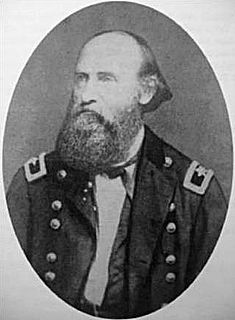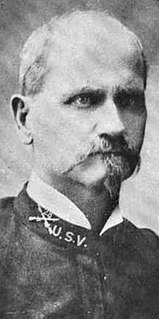This article includes a list of references, related reading or external links, but its sources remain unclear because it lacks inline citations .(January 2013) (Learn how and when to remove this template message) |
| Simon Suhler | |
|---|---|
| Nickname(s) | Charles Gardner |
| Born | 1844 Bavaria, Germany |
| Died | 1895 (aged 50–51) San Antonio, Texas |
| Place of burial | San Antonio National Cemetery, San Antonio, Texas |
| Allegiance | United States of America Union |
| Service/ | United States Army Union Army |
| Years of service | 1863 - 1865, 1866 - 1878 |
| Rank | Sergeant |
| Unit | 8th Cavalry Regiment |
| Battles/wars | American Civil War American Indian Wars |
| Awards | Medal of Honor |
Simon Suhler (1844–1895) was a private in the United States Army and a recipient of America's highest military decoration—the Medal of Honor—for his actions in the Indian Wars of the western United States.

The United States Army (USA) is the land warfare service branch of the United States Armed Forces. It is one of the seven uniformed services of the United States, and is designated as the Army of the United States in the United States Constitution. As the oldest and most senior branch of the U.S. military in order of precedence, the modern U.S. Army has its roots in the Continental Army, which was formed to fight the American Revolutionary War (1775–1783)—before the United States of America was established as a country. After the Revolutionary War, the Congress of the Confederation created the United States Army on 3 June 1784 to replace the disbanded Continental Army. The United States Army considers itself descended from the Continental Army, and dates its institutional inception from the origin of that armed force in 1775.

The Medal of Honor is the United States of America's highest and most prestigious personal military decoration that may be awarded to recognize U.S. military service members who have distinguished themselves by acts of valor. The medal is normally awarded by the President of the United States in the name of the U.S. Congress. Because the medal is presented "in the name of Congress", it is often referred to informally as the "Congressional Medal of Honor". However, the official name of the current award is "Medal of Honor." Within the United States Code the medal is referred to as the "Medal of Honor", and less frequently as "Congressional Medal of Honor". U.S. awards, including the Medal of Honor, do not have post-nominal titles, and while there is no official abbreviation, the most common abbreviations are "MOH" and "MH".

The American Indian Wars is the collective name for the various armed conflicts fought by European governments and colonists, and later the United States and Canadian governments and American and Canadian settlers, against various American Indian and First Nation tribes. These conflicts occurred within the United States and Canada from the time of the earliest colonial settlements in the 17th century until the 1920s. The various Indian Wars resulted from a wide variety of sources, including cultural clashes, land disputes, and criminal acts committed on both sides. European powers and the colonies also enlisted Indian tribes to help them conduct warfare against one another's colonial settlements.













